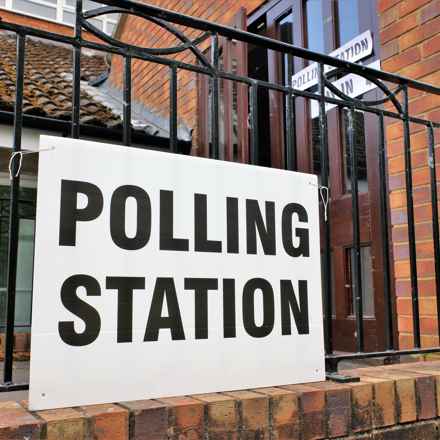Voting with a visual impairment
Posted: Thursday 06 June 2024
Local authorities must ensure that polling stations are accessible and equipped for people living with a visual impairment.
With a general election coming up, Colin Daniels, our Working Age and Young People’s Service Manager, tells you what you need to know to make sure you can vote independently on Thursday 4 July.
Ask for help
Firstly, Colin’s advice is to ask for help. Either, on the day of voting, or, if you’d like to request any aids in advance of election day, you can contact your local returning officer. By using the Electoral Commission’s postcode lookup tool, you can find their information and write to them.
There are a number of tools you can request, which are available to assist visually impaired voters. According to the RNIB, these include:
- Audio Accord: This device lets you listen to a recording of the candidates' names in the order they appear on the ballot paper. It can be used with a Tactile Voting Device (TVD) to help you find the voting boxes and ensure your vote is still secret.
- McGonagle Reader (MGR): This audio-tactile device combines an audio player with a plastic template to help you find the voting boxes on the ballot paper.
- Mobile apps and devices: If you let polling station staff know you have a visual impairment, they will allow the use of mobile apps such as "Seeing AI" and video magnifying devices, which use Artificial Intelligence to read printed text.
The Elections Act 2022 ensures all voters can access polling stations. Returning officers must provide tools like tactile voting devices, large print ballot papers, magnifiers, extra lighting, and staff assistance.
Read more about the electoral commission guidance.
Large polling cards
If you are turning up on the day of voting, then Colin highlights that all polling stations are required to have large print polling cards. He said: “These won’t be visible when you arrive and you need to ask for one, but polling station staff will be able to give you one of these if you require it.”
Make it clear you’re visually impaired
For the smoothest experience at the polling station, Colin’s advice is to make it known to the staff that you have a visual impairment. “Don’t be ashamed”, he said. “When you arrive let those behind the desk know you are visually impaired. They are there to help.”
Colin also recommended taking your cane, if you have one, or wearing a ‘I have a visual impairment’ badge.
Take your own pen
Colin said often polling stations use pencils, which can make it harder to read if you have a visual impairment.
“Taking your own pen can be worthwhile,” he said. “Take one that you like and are comfortable with at home. This will make it easier for you to see what you are writing.”
Alternative ways to vote
If you can’t get to the polling station on the day, or do not feel comfortable doing so, there are other options available to you. These include voting by proxy (getting someone to vote for you) or postal voting.
These options are available to everyone, not just visually impaired voters.
Don't forget your ID
Since May 2023, all voters must show a valid photo ID to vote in person. There are 22 acceptable forms, including:
- Passports
- Driving licenses
- Older/Disabled Person's bus passes
- Oyster 60+ cards
Out-of-date photo IDs are acceptable if you look the same.
You can exchange a paper driving license for a photocard or apply for a photocard travel pass if you are 60+, disabled, or partially sighted.
If you don't have the correct ID you can apply for a free voter authority certificate by 17:00 on Wednesday 26 June.
Voters in Northern Ireland can use an Electoral Identity Card.
Out and about
Live confidently with our practical guides to getting out and about, from traveling and transport to eating out and shopping.
Low vision aids
Devices like magnifiers, tablet computers and phones, as well as large-print products, can help you make the best use of your vision and ensure life runs as smoothly as possible.




